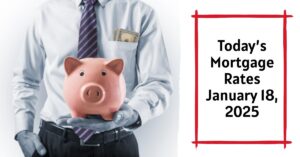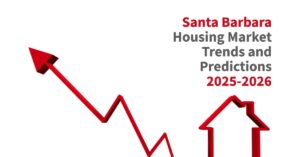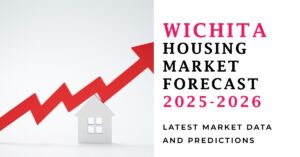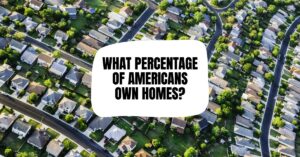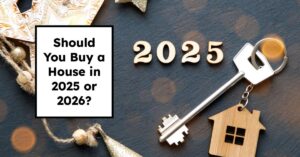Are you keeping a close watch on the housing market, especially in sunny Florida? You're not alone. The question on many minds is: Will the Florida housing market crash in 2025? While a widespread, state-wide crash isn't anticipated, specific metropolitan areas are showing signs of potential price declines. Specifically, Punta Gorda, Florida is identified as being at a very high risk of home price decline over the next year, with a greater than 70% probability of price drops. So, while not a state-wide crash, localized corrections seem likely.
Is this Florida Housing Market Heading for a Crash in 2025?
The National Picture: A Slowdown, Not a Collapse
Before we dive into the Florida specifics, let’s take a step back. The national housing market is showing signs of cooling after a period of rapid growth. According to a report from CoreLogic, home prices nationwide increased by 3.4% year-over-year in November 2024. While growth is still positive, this is a significant slowdown from the rapid gains seen in previous years. The forecast suggests a slight 0.2% price decrease in December 2024 before a moderate 3.8% year-over-year increase by November 2025. This indicates that we’re entering a period of slower growth, not a crash.
Regional Variations: The Key to Understanding the Market
The national trends can be misleading. Housing markets are incredibly localized. What’s happening in one part of the country may not be true for another. For instance, the Northeast saw the strongest price growth in late 2024, with several areas in Appalachia experiencing massive year-over-year increases. Conversely, states in the West like Wyoming and Idaho have lagged their previous peaks, facing price declines. This tells me that broad generalizations about the market simply don’t work; you have to look at granular data to understand what's really going on.
Punta Gorda, Florida: A Closer Look at the Risk
Now, let's focus on Punta Gorda, the specific Florida metro area identified as being at very high risk of a price decline. This doesn’t mean that the entire Florida market is doomed; but rather that certain areas are more vulnerable to a correction than others. The CoreLogic Market Risk Indicator (MRI) predicts a greater than 70% probability of home price declines in Punta Gorda over the next year. It’s important to understand why this particular market is flagged for concern. It indicates to me that maybe this particular metro area was significantly overvalued or has unique local economic factors in play, or even both.
What Makes a Market Vulnerable?
There are several factors that can contribute to a higher risk of a price decline:
- Overvaluation: If home prices have risen too rapidly, they may become unsustainable.
- High Housing Supply: An increase in the number of houses for sale can lead to downward pressure on prices, especially if demand is not keeping up.
- Economic Factors: A weakening local economy, job losses, or high unemployment can all dampen housing demand and potentially lead to price declines.
- Interest Rates: When mortgage interest rates rise, it can make borrowing more expensive, dampening buyer demand and prices.
- Demographic Shifts: Outward migration, or population decline in an area, could affect demand.
Without digging deeper into specific data related to Punta Gorda, it is not possible to say exactly why this metro is at high risk. However, the above factors are typically the primary drivers. I suspect, the rapid price increases witnessed in Florida during and after the pandemic are likely at play here, and this market is now undergoing a correction.
Is a Crash the Same as a Correction?
It’s crucial to distinguish between a market crash and a market correction. A crash typically refers to a rapid and dramatic collapse of home prices, similar to what happened in 2008. A correction, on the other hand, is a milder and usually more gradual decline in prices that corrects market imbalances. The current data suggests we’re more likely to see corrections in certain areas, like Punta Gorda, rather than a widespread crash.
Mortgage Rates and Market Dynamics
Mortgage rates play a significant role in shaping housing market trends. As rates rose in 2024, buyer demand cooled, leading to slower price appreciation and even declines in some areas. I believe that this is a natural market adjustment. As long as the economy isn’t in a recession, home prices generally continue to show long term growth, although it will vary by market.
The Importance of Local Data
When evaluating the housing market, especially if you are considering buying or selling, it is vital to use local and current data. National averages and general statements are simply not enough to make informed decisions. I often tell people to talk to local real estate experts for real-time local market insights.
Looking Ahead to 2025
So, what can we expect in 2025? While it’s impossible to make definitive predictions, I can analyze trends and make reasoned opinions based on that:
- Continued Slowdown: The national housing market will likely experience a continued slowdown in price growth.
- Regional Variations: Certain areas, like Punta Gorda, may face price declines, while other areas may continue to see moderate growth.
- Interest Rate Sensitivity: The market will be very sensitive to interest rate changes. If rates rise, price increases will further slow down or see declines in vulnerable areas.
- Importance of Data: Local data will be essential in understanding specific market trends.
My Personal Thoughts and Expertise
Having observed housing market cycles for many years, I believe that the market is simply undergoing a necessary correction. After periods of rapid price growth, some areas become overheated and vulnerable to price declines. While a correction can be concerning, it's often a sign of a more sustainable market in the long term. I always advice people to think long term and not focus on a specific cycle, and I think that will be most beneficial to home buyers.
I think there is some good news though, a market correction or even a modest price decline might give some relief to potential home buyers. In other words, this may be a good time for buyers to consider the market, especially if they are looking at a long term hold.
Conclusion: No Imminent Crash, but Watch Specific Markets Closely
The Florida housing market, specifically the Punta Gorda metro, appears at risk of a price decline but it's important not to generalize this risk to the entire state. While a widespread crash is not the most likely outcome for 2025, some local markets may undergo necessary corrections. It's vital to stay informed and use relevant data to make sound real estate decisions.
Additional Data Points:
- Nationally, home prices increased by 3.4% year over year in November 2024.
- The CoreLogic HPI forecast indicates a 0.2% decrease from November to December 2024, followed by a 3.8% year-over-year increase by November 2025.
- The states with the highest year-over-year increases in November 2024 were New Jersey (7.8%) and Rhode Island (7.3%).
Table: Top Markets at Risk of Home Price Decline
| Risk Rank | Metropolitan Areas | Level of Risk of Price Decline | Confidence Score |
|---|---|---|---|
| 1 | Provo-Orem, UT | Very High (Above 70% probability) | 50-75% |
| 2 | Albuquerque, NM | Very High (Above 70% probability) | 50-75% |
| 3 | Tucson, AZ | Very High (Above 70% probability) | 50-75% |
| 4 | Phoenix-Mesa-Scottsdale, AZ | Very High (Above 70% probability) | 50-75% |
| 5 | Punta Gorda, FL | Very High (Above 70% probability) | 50-75% |
Read More:
- Florida Housing Market Forecast for Next 2 Years: 2025-2026
- Florida Real Estate: 9 Housing Markets Predicted to Rise in 2025
- Florida Real Estate Market Saw a Post-Hurricane Rebound Last Month
- Florida Condo Market Faces Crisis With the New Law and Rising Fees
- Florida Housing Market Predictions 2025: Insights Across All Cities
- Florida Housing Market 2025 & Predictions for Next 5 Years
- Florida Housing Market Trends: Rent Growth Falls Behind Nation
- When Will the Housing Market Crash in Florida?
- South Florida Housing Market: Will it Crash?
- South Florida Housing Market: A Crossroads for Homebuyers

